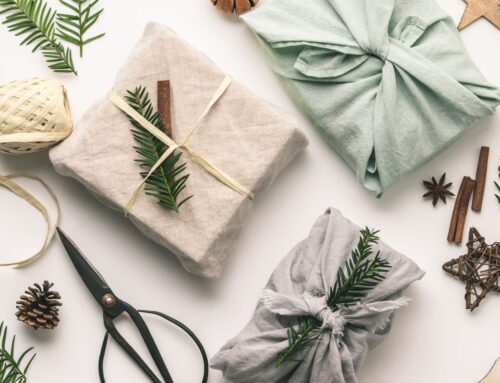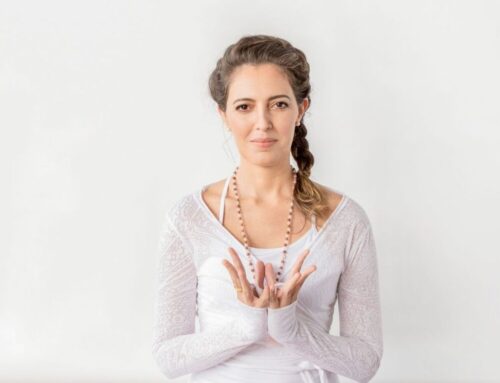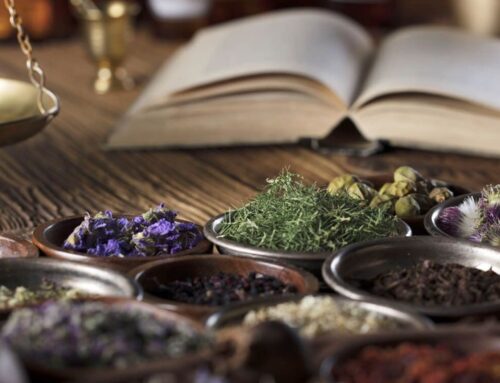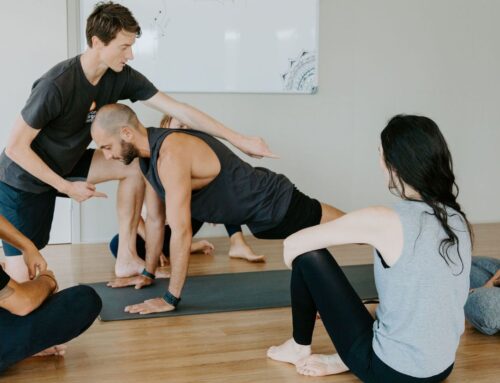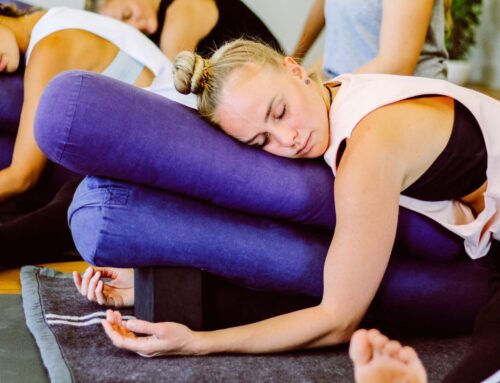As summer tails into autumn we see the days becoming shorter and the weather cooler. If we live in harmony with nature, this corresponds with a gradual shift towards introspection and restfulness. It’s time to swap out cones of gelato for mugs of chai, and to start replacing evenings at the beach with friends for quiet nights in.
According to Traditional Chinese Medicine (TCM), this time of year is associated with the element of metal – responsible for moving inwards, setting boundaries, developing structure and integrity. To maintain optimum health, focus shifts to strengthening and supporting the lungs and large intestine.
By incorporating a yin practice in our routine, we can welcome this energetic shift from external to internal focus, embracing more solitude and quiet time. We can also, with the right postures, encourage the free-flowing and harmonious movement of qi though our lung and large intestine meridians. The lungs and large intestine are responsible for immunity (defending against pathogens) as well as taking in and conserving what we need, while letting go of anything that’s no longer serving us. This includes emotional baggage as well as physical matter such as metabolic by-products.
To nourish our lung and large intestine meridians, we target the following areas of the body:
- Lung Meridian: pectorals, front of the shoulder, radial side of the inner surface of the arm
- Large Intestine Meridian: radial side of the back of the arm, top of the shoulder, upper back around the upper shoulder blades, and sides of the neck.
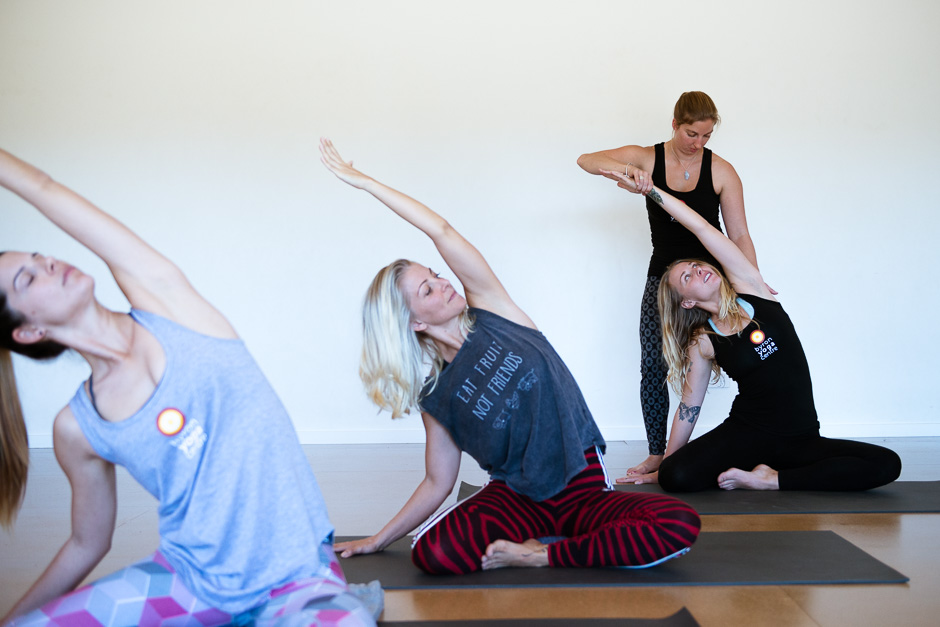
Try this sequence of yin postures to nourish your lung and large intestine and boost immunity. You might like to begin by setting an intention around letting go… perhaps letting go of prolonged sadness or grief, or maybe generally letting go of the old to create space for the new.
In each asana, find your first layer of resistance, never moving to your maximum. Support yourself with props so that you’re able to relax. And maintain a soft, steady breath throughout your practice. Note that if you’re working with shoulder injuries, this practice might not be for you. If you have any doubt, always consult a medical practitioner.
- Supported Fish (Props: 2 blocks or a bolster and a block)
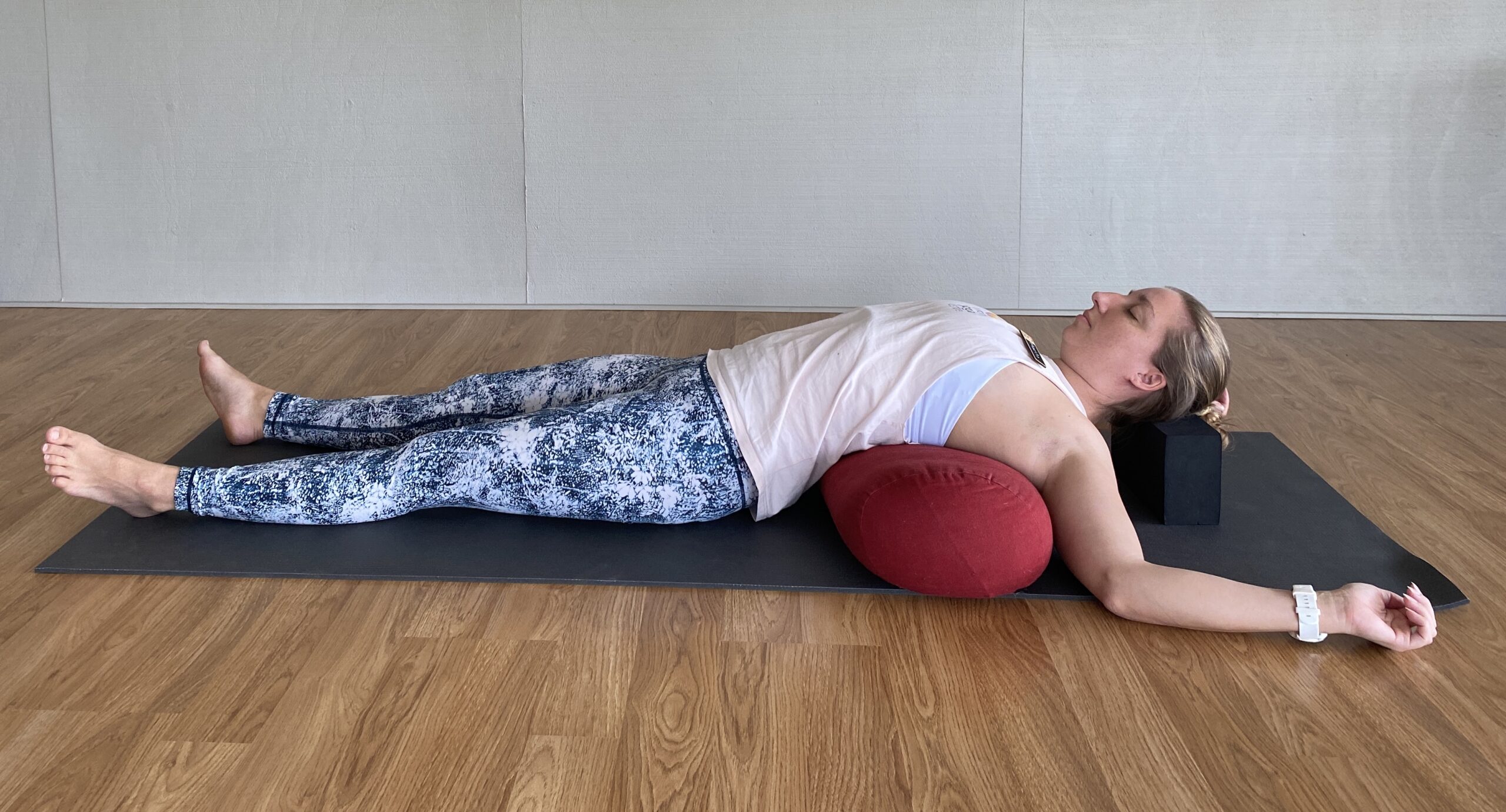 Lie supine with one block (medium height) under the bottom tips of your shoulder blades, and a second block (low, medium or high, as you prefer) under your head.
Lie supine with one block (medium height) under the bottom tips of your shoulder blades, and a second block (low, medium or high, as you prefer) under your head.
Stretch your legs out along the floor. Reach your arms overhead, resting your hands on the floor and allowing your elbows to fall out towards the sides.
Make any adjustments to your props that you need to so you feel your chest and shoulders gently opening. There should be no pain or pinching anywhere in your body.
Stay for around four to five minutes.
To release, bring your arms down alongside your body, palms, down. Gently tuck your chin to your chest. Press your forearms and palms against the floor and slowly press yourself up to sitting.
Move your props aside and slowly ease back down to lie on your back in Pentacle – arms and legs wide. Rebound here for one to two minutes before rolling to one side and making your way up to sitting.
- Open Wing/Prone Shoulder Stretch (Props: optional bolster for more gentle variation)
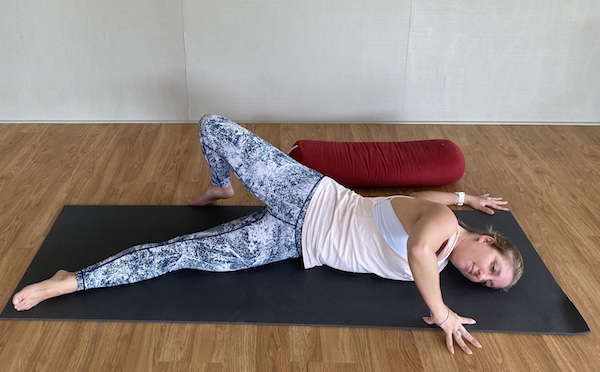
Lie face down and extend your right arm out to the right at shoulder height, palm down. If using a bolster, have it on your left side, alongside your torso Turn your right cheek to the mat.
Bend your left elbow and place your left palm on the floor alongside your ribs. Bend your left knee. Press your left palm down against the floor and roll towards your right side.
For a gentler option, bring your bolster in to support your chest and relax into it.
For a more intense option, bend your right arm into a cactus position.
Hold for around three minutes before mindfully rolling back to centre. Rest your left cheek on the mat and your arms alongside you. Stay in this rebound position for one to two minutes before repeating on the other side.
- Melting Heart (Props: optional blanket and bolster/block)
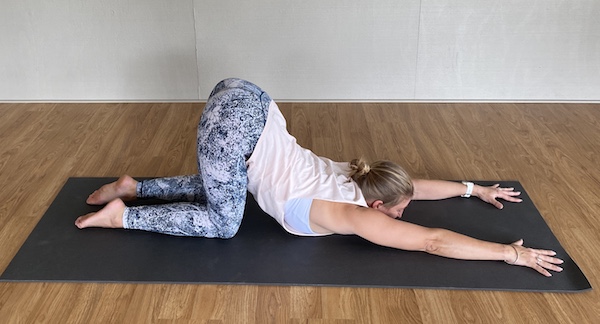
Begin in a four-point kneeling position. If your knees are sensitive, place a folded blanked under them or fold your mat for more cushioning.
Keeping your hips aligned above your knees and slowly walk your hands forward until you can rest your forehead on a block, bolster or the floor, or rest your chin on the floor.
Hold for around three minutes.
To release, gradually walk your hands back in. Rebound by lying on your belly or on your back in pentacle for one to two minutes.
- Twisted Child’s Pose (Props: optional blanket/bolster if knees are sensitive)
Begin in a wide-knee child’s pose, supporting your knees with a folded blanket if preferred. Extend your arms forward.
Pressing your left hand into the mat, lift your chest slightly. Thread your right arm under the left (palm up) then allow your chest to relax down. Rest your forehead or right cheek on the mat.
Hold for around three minutes.
To release, slide your right arm out from underneath the left. Rebound in Pentacle, lying on your belly, or in Child’s pose before repeating on the other side.
- Supine Twist (Props: optional bolster blanket or block)
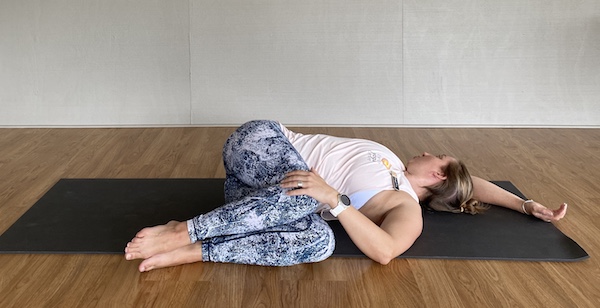
Lie on your back with knees bent and feet flat on the floor. Lifting your hips just off the mat, shift them to right about a handspan, and lower them back down.
Lift your feet off the floor and slowly lower your knees down to the left. Allow your legs to relax onto the floor, tucking props in between your knees if this is more comfortable.
Reach your right arm overhead, resting your bicep alongside your ear on the floor (having your arm overhead will help access your lung meridian). If it’s comfortable for your neck, turn your head to the right.
Stay for three to five minutes.
To release, ease your head back to centre. Bring your knees back to centre. Re-align your hips. Rest in Pentacle for a minute or two then repeat on the other side.
- Savasana
Complete your practice by spending five to 10 minutes (or longer!) in Savasana.

